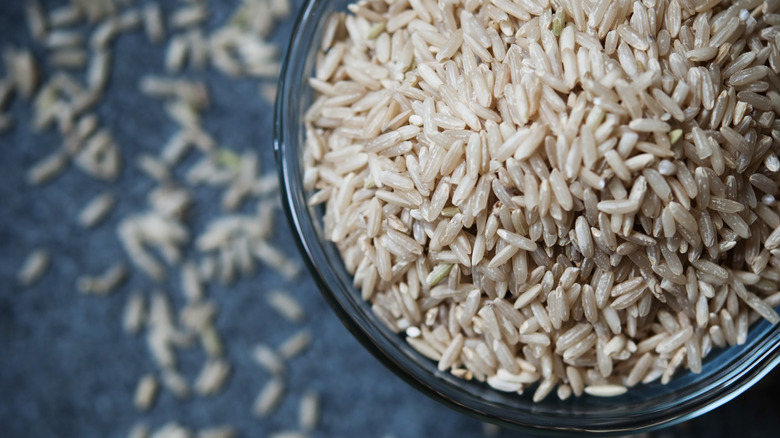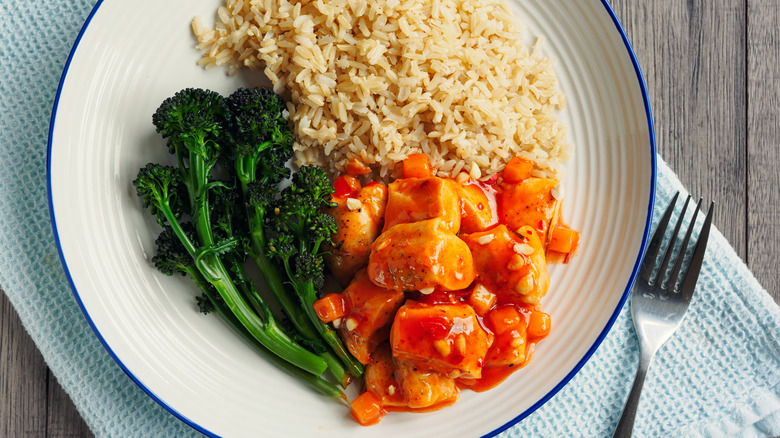The Step You Shouldn't Skip For Tender Brown Rice
The secret to perfectly tender brown rice? Letting it rest before serving. Whether you're using a rice cooker or cooking the grains on the stovetop, resist the urge to open the lid right away. Instead, allow the rice to sit undisturbed for 10-15 minutes. Just like steak benefits from resting after grilling, brown rice continues to cook in its residual heat, allowing the steam to soften the grains and lock in more moisture.
Brown rice is a whole grain, often called "cargo rice" by shippers because of how it looks before being milled. Unlike white rice, which has its bran and germ removed, brown rice retains these parts, making it higher in fiber and nutrients. This also means it requires more care during cooking to avoid too much of a firm texture.
There are two popular methods for cooking brown rice. The "pasta" method involves boiling the grains in a large pot of salted water until al dente, then draining and letting dry on low heat to absorb any remaining moisture. The other method is more straightforward: simmering the rice in water until fully absorbed. While soaking the rice helps to reduce cook time and improves digestibility, it's not necessary.
Regardless of your preferred rice-cooking method, the crucial step remains the same: the rice needs to rest after cooking. In rice-loving cultures like the Philippines, this process is known as inin. Then, just fluff with a fork before serving to separate the grains for the perfect texture.
Why brown rice is worth the trouble
Because brown rice retains its fibrous bran layer, it takes longer to cook and has a chewier, nuttier flavor than its white rice counterpart. White rice is essentially polished brown rice, which gives it a softer texture but fewer nutrients. Brown rice, on the other hand, is packed with fiber, magnesium, and antioxidants that make it more dense.
The fiber content in brown rice is particularly notable — around 10% of the recommended daily fiber intake is satisfied in a typical serving, compared to just 2% in white rice. This fiber not only aids digestion but may also help regulate blood sugar levels, making brown rice a preferred choice for those seeking a healthier alternative. Additionally, the bran contains powerful antioxidants that may help neutralize harmful free radicals and possibly reduce inflammation in the body.
That said, both brown and white rice have their place in a balanced diet. White rice, with its softer texture and milder flavor, pairs well with lighter dishes. But, brown rice's nutty flavor and chewy texture make it ideal for heartier meals like savory mushroom stews, or dishes with thick sauces that can stand up to the robust profile.
The extra steps required for cooking brown rice are worth it when you consider the added flavor and nutritional benefits. Mastering brown rice means you're not just cooking a healthier alternative; you're enhancing the depth of any meal. Just don't forget — let it rest before serving!


